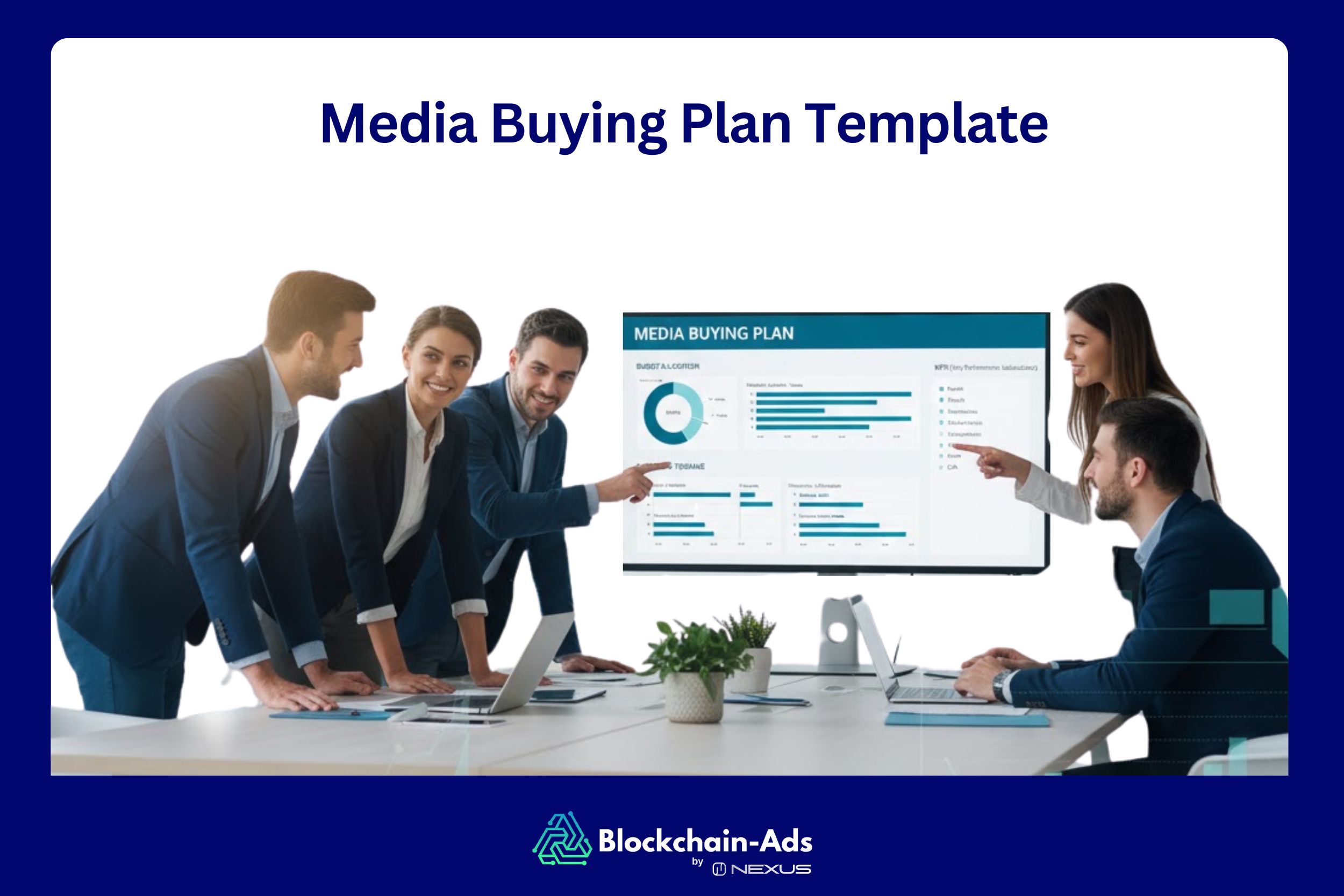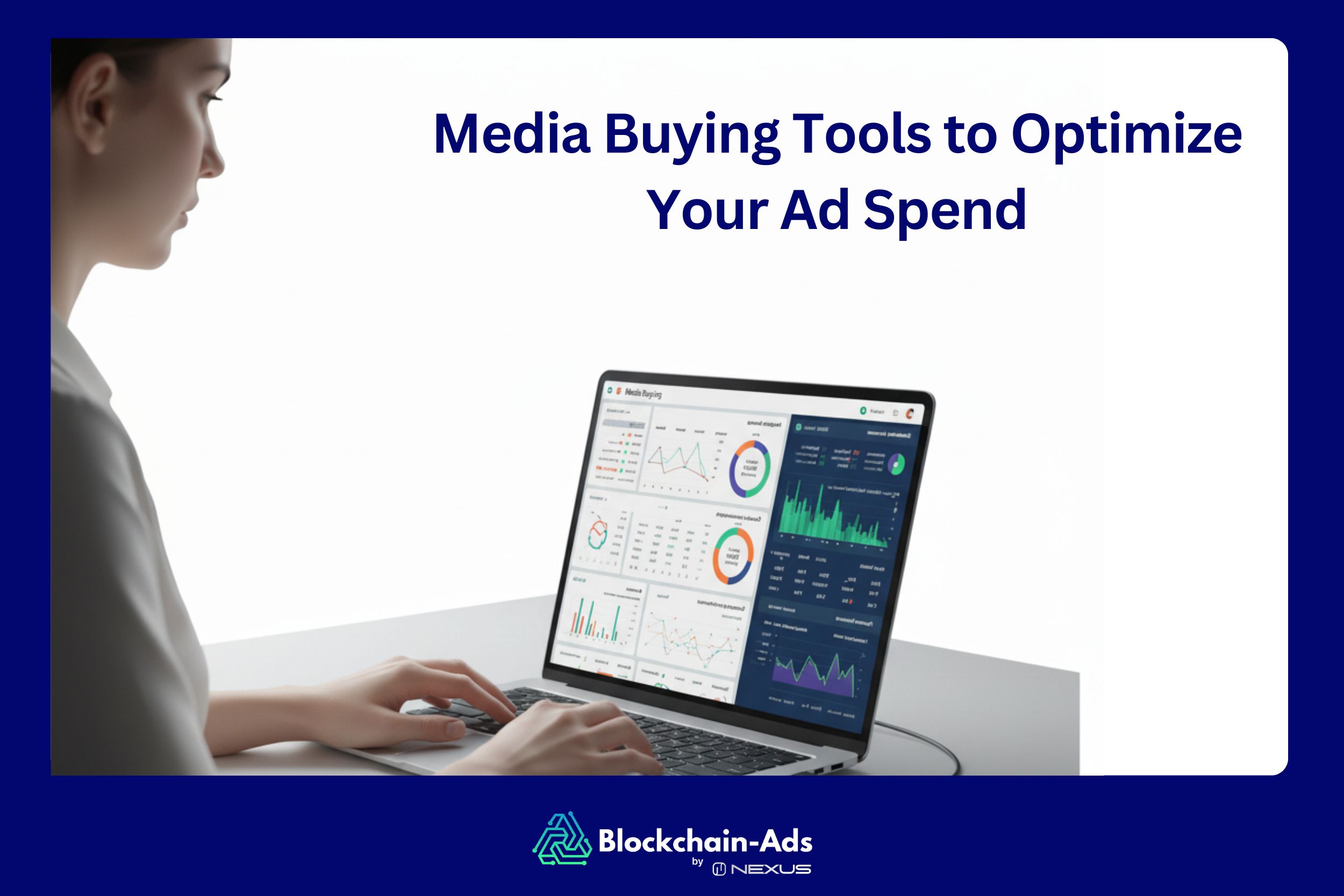Affiliate Marketing in Online Advertising: How It Works, Channels, Strategies & Tools
Encabezamiento
- Cointelegraph Formula ofrece varios formatos de anuncios a 8 millones de lectores mensuales en más de 190 países, aprovechando su nombre de confianza en el mundo de las criptomonedas.
Affiliate marketing is one of the most effective and cost-efficient ways to advertise a brand online. Over 80% of companies rely on affiliate programs. Take Amazon for example, they have 900,000+ partners, and there are countless brands who use affiliates to drive steady, low-risk growth.
By the end of 2025, affiliate marketing spending will hit $12 billion, showing that this pay-for-results approach is only getting stronger.
Here’s how it works: brands team up with creators, publishers, and influencers across channels like blogs, newsletters, and social media. They use tools to track every click and sale, making sure you only pay for what works.
Still, many affiliate programs lose money to scammers generating illegitimate sales to earn commissions, or mistakes in tracking, which can make it hard to see what’s truly working.
Blockchain-Ads solves these issues through programmatic advertising with blockchain-verified tracking, clear attribution, and strong fraud prevention. Advertisers can reach their target audiences across all channels and control every campaign in real time from a single platform.
In this article, you’ll learn how affiliate marketing works, smart strategies to try, and how what actually gives you the control and transparency you need to run a winning campaign.
What Is Affiliate Marketing?
Affiliate marketing is simply a performance-based model whereby brands partner with affiliates. These can be bloggers, influencers or media platforms who promote their products in exchange for a commission.
Here’s how affiliate marketing compares to other online ad models:
- Affiliate marketing: You pay only when a conversion has happened (affiliate sales, leads, etc).
- CPC (Cost per Click): You’ll pay for this per click whether it converts or not.
- CPM (Cost Per Mile): This one is paid for every 1,000 impressions even if nobody engages.
- Flat rate advertising: You pay a fixed amount for placement (banner, mention) regardless of performance.
The best part about this model is that it helps shift the risk from advertisers to the affiliates. So, you don’t pay for ads that don’t work. And that’s perhaps one of the big reasons why affiliates are still growing.
Affiliate marketing spending in the United States in 2023 was $9.56 billion, with this value projected to increase to roughly $12 billion by the end of 2025.
With creators and publishers always looking for ways to monetize and brand finding low-risk marketing channels to scale, affiliate programs will continue to bridge this gap.
How Does Affiliate Marketing Work?

Affiliate marketing takes time. The models connect multiple parties working together to promote products or services and share revenue based on results. In short, it’s the brand, the partner, the platform in between, the tools that track it all, and of course, the customer. Here’s how it all fits together.
Advertisers
This is basically the company that wants more affiliate sales or signups. They create an affiliate program and offer a commission. It can be 10% per sale or $15 per lead. Their marketing efforts are to set clear rules, provide promo materials and pay an affiliate marketing business when it delivers.
Affiliate
These are individuals or affiliate marketers promoting an offer. It can be a YouTuber with a niche following, a review site with SEO traffic or even a cashback app. Their affiliate marketing efforts are to share tracked links and earn a cut if someone takes an action through them.
Affiliate Networks
These are like middlemen. Platforms like ShareASale, Impact, or Rakuten connect advertisers with thousands of potential affiliates. Their marketing efforts are to handle onboarding, approvals, reporting, and sometimes payments. Not all programs use them, though, but they make it easier to scale.
Tracking Platforms
This is where the tech kicks in. Whether it’s in-house software or a third-party tool like Everflow to Tune monitor who sent the traffic, what happened, and whether it should be credited. They are actually the reasons anyone gets paid fairly.
Tracking normally happens in a few ways, including:
- Cookies: These help to store referral information in the user’s browser.
- UTM Parameters: They are appended to affiliate links to track traffic sources in analytics tools.
- Pixels: They are placed on the thank-you pages and fire when a conversion happens.
- Server-to-server (S2S): It’s a more reliable method where conversions are tracked via backend calls.
Remember that first-party tracking (your own domain/servers) is more accurate and privacy-compliant these days.
The Customers
This is the end user. They are the ones who click the affiliate link, land on the offer and if they buy or sign up, everyone wins. The customer gets the products, the affiliate marketing business gets its cut, and the brand gets a paying customer they didn’t have to chase with ads.
Why Do Companies Use Affiliate Marketing?
Here’s what makes it a great deal for most companies:
Cost-efficiency
You’re not paying for clicks that don’t convert. You only pay affiliate marketers when there are conversions. This is especially useful for brands that want to grow without upfront burn.
For example, SaaS brands like SEMrush and Shopify use most affiliate programs to scale users. Instead of gambling on Google Ads, they give affiliates a cut for bringing in paying users. It’s that simple, clean and way more predictable.
Reach
It helps expand your reach without building it from scratch. Already, affiliates have audiences. They’ve built trust. When they talk about your brand, it doesn’t feel like an ad, it feels like a recommendation.
Fintech brands like Revolut and eToro get listed on niche finance blogs, comparison affiliate marketing websites and YouTube channel explainers, all thanks to affiliate deals.
Performance-based payments
If your affiliate marketers don’t drive results, they don’t get paid. When an affiliate earns, you pay them a slice of a sale you wouldn’t have made on your own.
eCommerce brands actually love this, especially the new ones. They let affiliates do the work, while they stay focused on the product and fulfillment.
Channel diversity
Most affiliate marketers don’t just promote, they stick with you. They know you, talk to your target audience, test your new offers and over time, they become part of your growth engine.
What Are the Main Types of Affiliate Marketing?
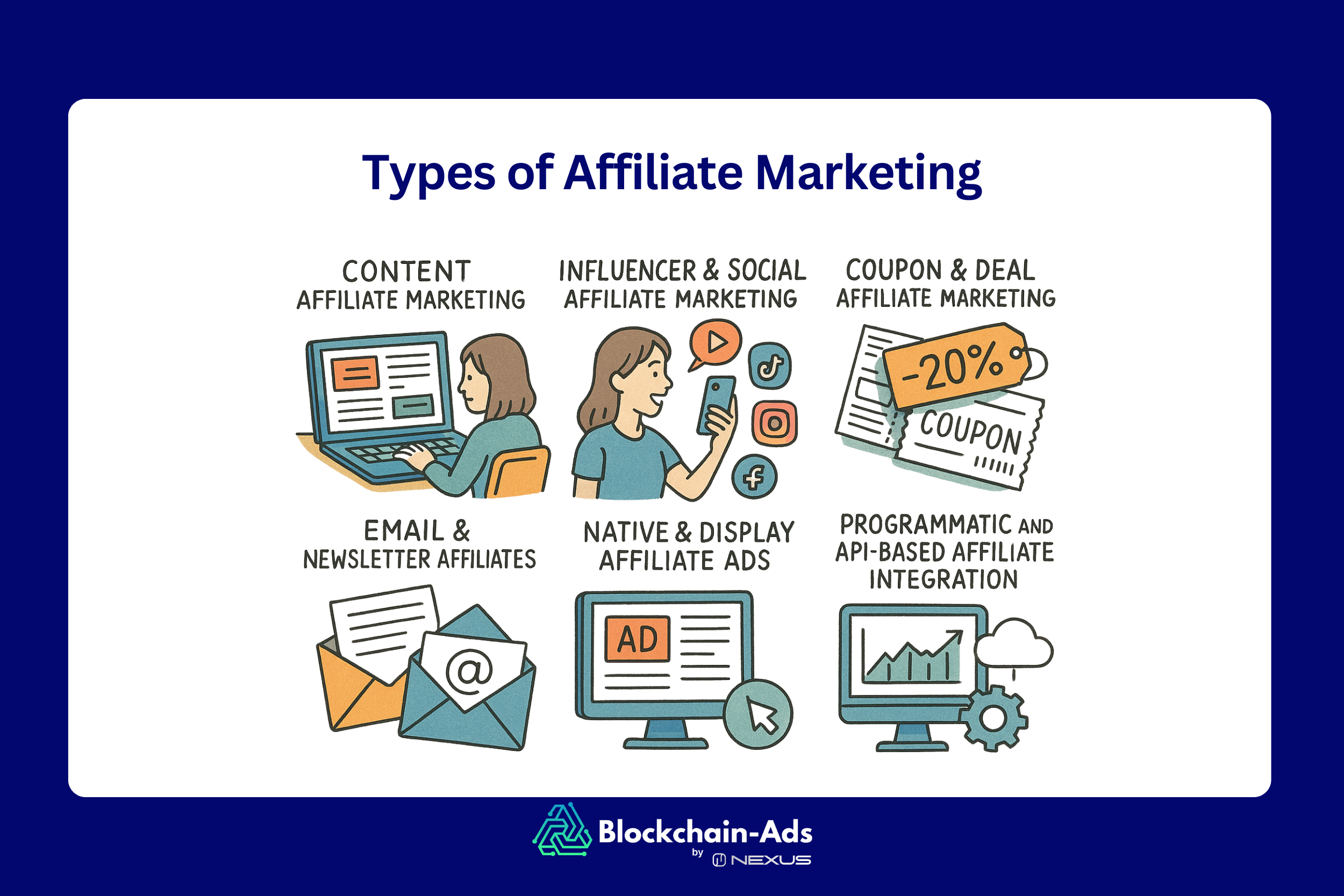
There’s no one way to do affiliate marketing and this is perhaps what makes it so useful. Of course, depending on the affiliate niche, audience and platform, affiliate marketers show up in totally different forms. Here’s the breakdown of the main types you’ll find out there:
Content Affiliate Marketing
These affiliates write things that people are already searching for. It can be reviews, tutorials, comparisons or anything that helps someone make a buying decision. Most content affiliates are bloggers, niche site owners or writers with specific expertise.
For example, if you’re one of the top affiliate marketers with a personal finance blog, you can compare ‘’Top Budgeting Apps for 2025’’ and include your fintech tool in the top three with a tracked link, screenshot and a breakdown of its key features.
Influencer & Social Affiliate Marketing
You can find these affiliate marketers live on digital marketing channels like TikTok, YouTube, Instagram or even Reddit. They basically create quick, visual, or personal content. Social media marketing can also be product routines, testimonials, or how-tos and leave affiliate links in their bio or descriptions.
For example, a skincare influencer can walk through her evening routine on Instagram stories and casually drop a discount link for your facial oil in her bio and swipe-up.
Coupon & Deal Affiliate Marketing
Coupon affiliates move fast. They focus on volume and urgency. This means limited-time offers, holiday discounts, or maybe flash deals. Most run large coupon or cashback sites that thousands of shoppers check before they hit ‘’checkout.’’
With this, they don’t just build a deep connection but they drive conversions when the price matters most. For instance, your brand may run a 25% off sale. Within 48 hours, it’s live on RetailMeNot pushing traffic through affiliate links that drive one-click savings for shoppers ready to buy.
Email & Newsletter Affiliates
Email affiliates speak directly to the opted-in audiences and that’s what makes them so powerful. Whether they are running a tech newsletter or a massive general-interest list, these affiliate marketers earn trust by recommending products that align with their readers’ needs.
An example can be a weekly newsletter like Crypto Toolkit sending a list of DeFi tools. Your platform is listed with a tracked link and a quick note on why it’s trending. This can reach thousands of engaged readers who care about blockchain products.
Native & Display Affiliate Ads
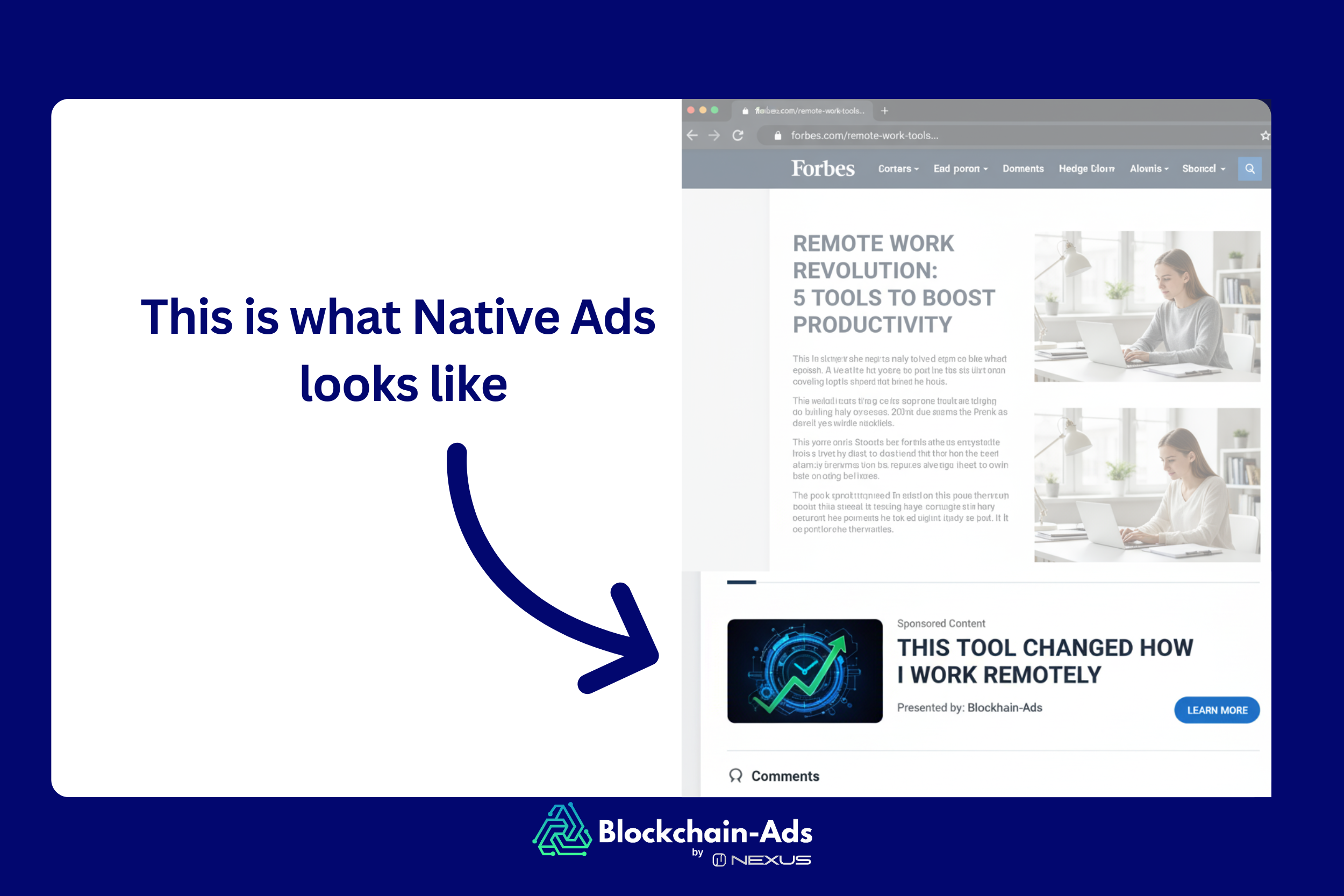
Some successful advertisers go the paid media route. They buy ad space on websites through DSPs like Blockchain-Ads, and then use display or native ads to redirect traffic through affiliate links. Basically, they are helpful for brands that benefit from soft curiosity-driven clicks or products that need explanation before a sale.
An example is a native ad for your productivity app showing up like ‘’This tool changed how I work remotely’’ at the end of a Forbes article. The landing page is optimized with an affiliate CTA and trial sign up. Running a native ad campaign is easy and platforms like Blockchain-Ads provide the tools to make it happen.
Programmatic and API-Based Affiliate Integration
This one works more behind the scenes. They don’t promote manually but they plug into data feeds, APIs or automation tools to show offers dynamically.
An example, a hotel comparison site uses your affiliate feed to display real-time rates and availability for listings in a specific place. When a user books through the site, the commission is tracked via your affiliate API.
Where Does Affiliate Marketing Fit in the Advertising Funnel?
Affiliate marketing can technically appear at every stage of the advertising funnel. However, it does its best in the middle and the bottom because that’s where the intent is already forming or fully active, and the buyers are closer to making decisions.
Unlike paid awareness campaigns that cast a wide and expensive net, affiliate partners meet users with more precision and relevance, often when they are already in the mindset to act. Let’s break it down stage by stage.
Awareness
Affiliate marketing plays a minor role but is valuable at the top of the funnel. This is actually the stage where people are just starting to explore a category or becoming aware of a problem they want to solve.
Instead of aggressively pushing a product, most successful affiliate marketers here focus on light exposure. Influencer promotions and podcast sponsorships are common tools at this stage. These formats introduce the brand without asking for immediate action. The goal? To get noticed subtly through someone the audience already trusts.
Consideration
This is where the affiliate marketing program really earns its keep. Buyers at this stage are researching, comparing options and weighing the pros and cons. Affiliate partners come in with reviews, tutorials, listicles and detailed comparisons. They create valuable content that becomes part of the decision-making process, often ranking on search engines for ‘’best of’’ or ‘’vs.’’ style queries.
Since the target audience is already looking for guidance, well-timed affiliate content can strongly influence which product they ultimately choose. And because affiliate marketers only get paid when they convert someone, their incentives naturally align with making sure that the information is actually helpful.
Conversion
At the bottom of the funnel, the user is already sold. They just need a reason to hit that checkout button. This is indeed where affiliates use coupons, cashback offers or retargeting affiliate marketing strategies to nudge the buyer towards action.
These tactics don’t just push for the sale, but they often prevent cart abandonment and close the loop. It’s a stage where affiliate marketing delivers its most measurable ROI, which is the click, the sign-up or the sale.
What Platforms Are Used in Affiliate Marketing?
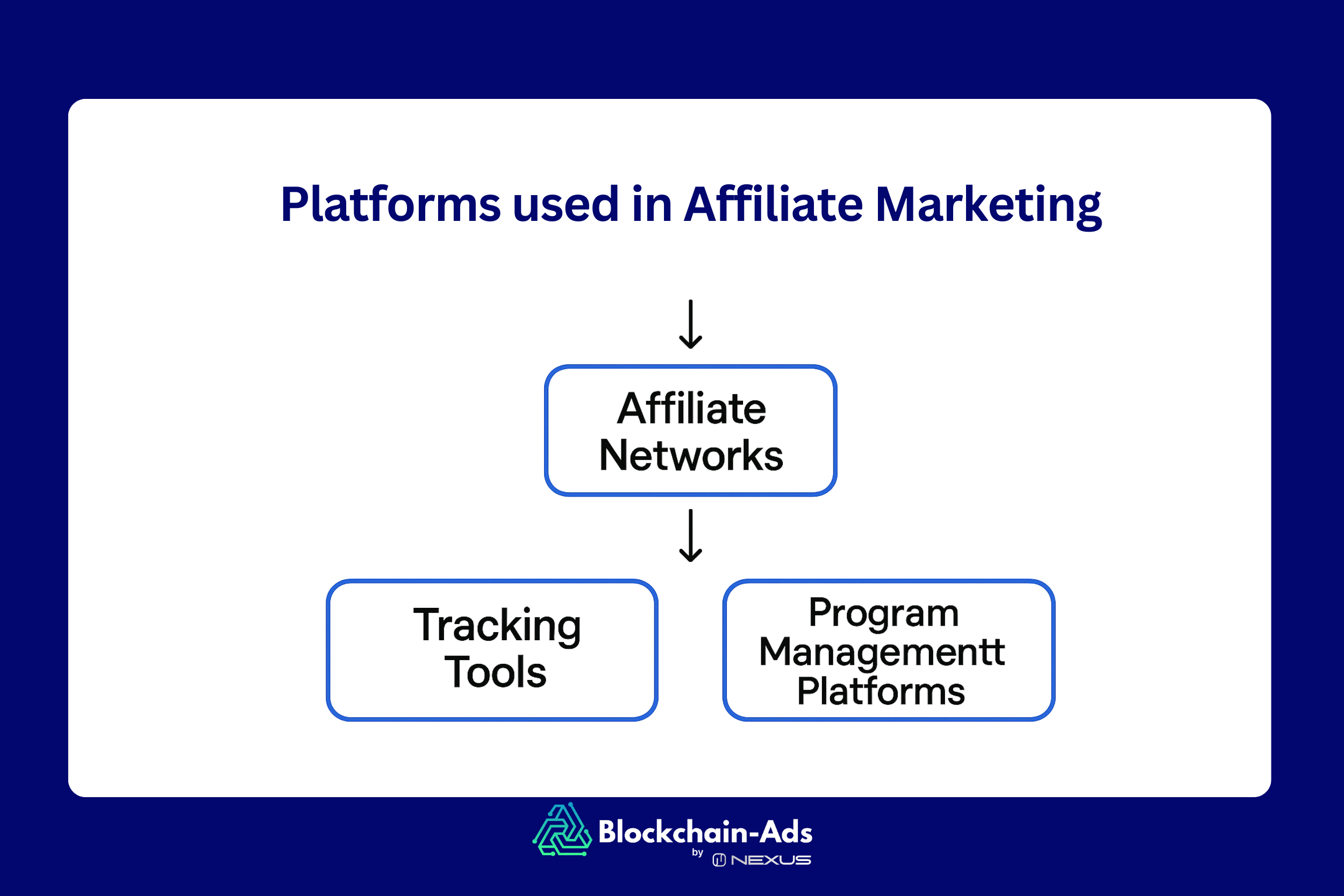
Basically, running a solid affiliate income program takes more than just signing up partners and dropping a few clicks. You need the right tools to help manage relationships, track performance, and maybe to scale your affiliate marketing campaigns without losing your mind.
Different platforms serve different purposes. Some will help connect you with affiliate marketers. Others can handle tracking and some help manage everything in one place. Here’s how they break down:
- Affiliate Networks: These are platforms that connect advertisers with a large pool of affiliate marketers. They are like a marketplace where brands can publish their offers and affiliates can apply to promote them. The network can handle tracking, payment, reporting and often helps with compliance too. Examples are CJ, ShareASale, Impact, and PartnerStack.
- Tracking tools: There are performance-based platforms that can handle the technical side from unique affiliate link tracking and click attribution to fraud detection and reporting. You’ll benefit highly from them if you’re managing your own program or working with multiple affiliate marketers. Examples include Voluum, Everflow, and Post Affiliate Pro.
- Program management platforms: These are platforms that give you full control over your affiliate program without relying on a third-party network. You can easily onboard affiliates, track conversions, manage commissions, and customize the entire experience to your brand. Good options are Tune, Refersion, and Affise.
How to Launch a Successful Affiliate Program
You don’t need a huge team of budget to start an affiliate program. However, you’ll need a structure, which means setting it up with care right from the beginning. Here’s how to do it:
- Set up the foundation: Before anything goes live, it is important to figure out what you’re offering and who it’s for. Are you promoting one product or your whole store? Are you going to manage this solo or are you bringing in a network or tracking platform to help? Pick the tech early and keep it light if you’re just starting out.
- Choose a commission structure: You’ll need to choose how the affiliate earns. Is it a flat payout per sale? Revenue sharing? Tiered commissions? There’s no perfect formula, but it has to make sense for your margins and feel worth it for the affiliates.
If it feels like a bad deal, they’ll ghost you. So, keep it clear, competitive, and far. And never hide the payout terms because they’ll find out anyway.
- Recruit affiliates: Start with the right affiliate marketers, not the loudest ones. Don’t just go for follower counts. Start with the people who actually talk to your target audience like niche bloggers, YouTubers with relevant content, creators who care more about trust than clicks. You can reach out manually at first with a warm DM instead of a cold invite link.
- Set the rules: This step gets skipped too often. You must spell out what’s allowed and what’s not. No brand bidding, coupon stacking, misleading claims, and shady traffic sources. If there is any gray area, clarify it. A good program focuses on protecting its reputation just as much as it drives affiliate marketing income.
- Track performance: If you can’t see what’s working, then you can’t grow it. You need to track everything from clicks and conversions to top-performing affiliate marketing partners. Use a tracking platform that’s easy to read and use. And test before launch. Nothing kills a new program faster than broken affiliate links or missed commissions.
What Are the Benefits and Challenges of Affiliate Advertising?
Affiliate marketing works. However, it is not magic and like anything else in digital marketing, it comes with upsides and tradeoffs. Here’s what you’ll be dealing with in case you want to start affiliate marketing:
How Does Affiliate Marketing Compare to Other Promotional Models?
Some people basically tend to use affiliate, referral, and influencer marketing like they are interchangeable. They are actually not related affiliate marketing strategies, and if you’re building a strategy, understanding their differences matters.
Each option affects how you track, how you pay, who’s promoting your brand, and how much control you actually have. Here’s how it really breaks down.
Programmatic Advertising vs Affiliate Marketing
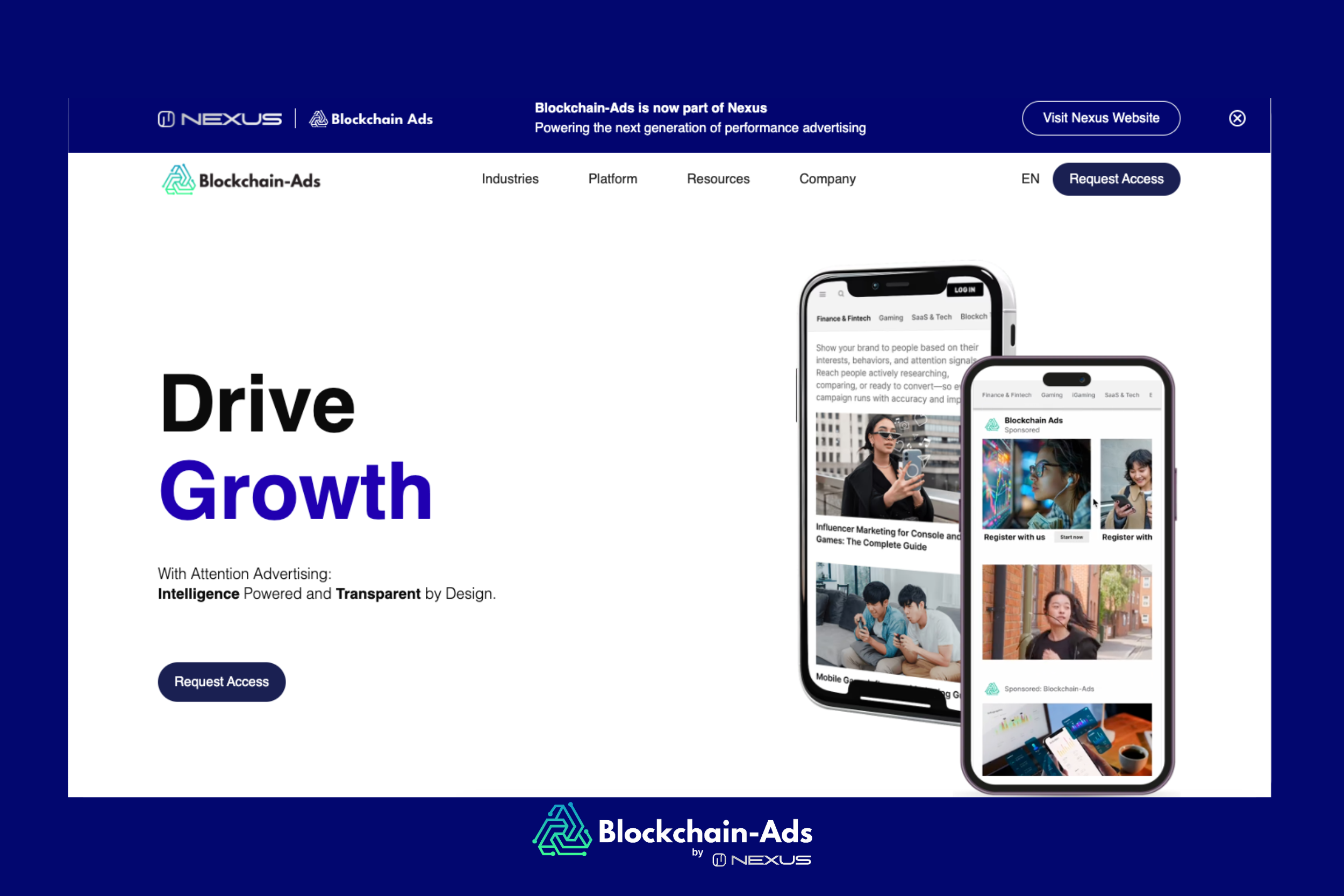
Programmatic advertising uses automated technology to buy ad space and reach targeted audiences with precision and speed. Platforms like Blockchain-Ads let advertisers set up, launch, and manage campaigns instantly across web, mobile, and connected TV, using AI-driven optimization and transparent, blockchain-verified reporting .Below is how these two compare:
- Visibility & Control: Affiliate programs rely on external partners to promote your brand, giving you limited control over where and how offers are shown. Programmatic advertising lets brands target and reach high-value users directly, delivering ads at key moments for awareness, engagement, and conversion. Blockchain-Ads provides direct, hands-on control of every campaign parameter, targeting, budget, creatives, and more, all managed from one unified platform.
- Tracking & Transparency: Tracking every part of the user journey can be challenging in affiliate marketing, often leading to gaps in performance data. Blockchain-Ads solves this with blockchain-based reporting, where every impression, click, and conversion is transparently logged, audited, and attributed in real time.
- Fraud & Brand Safety: Affiliate marketing can be exposed to risks like fake conversions and poor-quality traffic. Blockchain-Ads uses built-in fraud prevention, on-chain verification, and human QA, ensuring only verified, compliant results and safe brand placements—especially critical for sensitive industries.
- Scalability: Affiliate programs need ongoing management and relationship-building to drive growth. Blockchain-Ads enables instant scaling, using AI to optimize and expand reach across all digital channels, making campaign adjustments seamless and efficient.
- Compliance & Regulated Industries: Regulated sectors such as finance, gaming, crypto, CBD, adult, alcohol, and tobacco often require strict compliance and transparent reporting. Blockchain-Ads is designed for these needs, offering verified delivery, granular targeting, and clear audit trails to meet regulatory demands worldwide.
Choose affiliate marketing for partner-driven conversions and when you want to leverage external audiences. Go with programmatic advertising with Blockchain-Ads if you value real-time control, deep transparency, strict compliance, and the ability to scale campaigns quickly across every channel and regulated market.
Referral Marketing vs Affiliate Marketing
Referral marketing is all about existing customers recommending a product to people they know. They can be friends, family, or colleagues. Meanwhile, affiliate online marketing involves third parties with an audience and their goal is to make money by sending traffic that converts. Below is how these two compare:
- Intent: Referral marketing is basically rooted in personal experience. The person who is referring to your product is usually a happy customer. It’s kind of like ‘’I use this product and you should too’’. The people being referred to are friends, siblings or coworkers. It feels organic because it is.
Affiliate online marketing, on the other hand, is all about generating conversions and earning a commission. They are not always customers themselves and their value lies in audience reach. You can think of it as word of mouth vs. performance marketing.
- Use cases: Referral marketing works well for products that people naturally talk about. It can be subscription products, SaaS, and finance apps. Affiliate marketing performs better when you scale. It’s ideal for e-commerce brands, info products, digital marketing tools or even finance platforms that need volume.
- Common platforms: Referral marketing is usually integrated into the product or checkout flow. This is normally done using tools like ReferralCandy and Friendbuy. Affiliate programs are typically run through third-party platforms. It can be Tune, Impact, or ShaASale. These help brands to recruit at scale, monitor performance and automate payouts.
So, when do you use each? If your customers love your product and talk about it naturally, a referral program is worth it. Alternatively, you can try affiliate marketing if you’re trying to reach new audiences.
Influencer Marketing vs Affiliate Marketing
Influencer marketing is when a brand pays someone for content that promotes their product or service. On the other hand, affiliate marketing pays the partner only when they generate traffic or actual results. Here’s the breakdown of the key differences.
- Payment models: Influencer deals are often flat fees. A brand might pay $500 for a reel or $1,000 for a carousel post. It doesn’t matter whether the post performs or not. Just posting is the end of it. Affiliates, on the other hand, will earn commission which is tied to the outcomes. If there is no result, then no payment.
- Content control: Influencer marketing usually involves a creative brief. The brand does suggest the angles, hashtags, tone and sometimes even scripts. In short, an influencer has to follow the brand brief and guidance.
With affiliate content, the creator has more freedom. They can write a blog post, film a YouTube review or even send an email, everything in their own voice. This actually leads to more authentic messaging.
- Longevity: Influencers often post short-term campaigns and die quickly. Why? A TikTok might get traction for a few days, then disappear into the feed. Affiliate content like blogs, videos, and Search Engine Optimization articles can help keep driving traffic and sales for months or even years. It’s the difference between a spike and a steady stream.
- Platforms: Influencers do well on visual platforms such as TikTok, Instagram, and Snapchat. The content they share is short, punchy and attention-seeking. Affiliates, by contrast, tend to own affiliate websites, run newsletters or build long-form content on YouTube and blogs. Their goal is to educate, compare, and guide a user towards a decision not just get a like.
Generally, you get the eyeballs in one strategy and an action in the other. Smart brands allow creators to do both affiliate marketing tips. You get the reach and performance simultaneously.
Best Practices for Managing Affiliates
Once your affiliate program is live, it is important to keep on doing the right thing to remain relevant. Note that the best programs don’t just attract great partners, they support and motivate them over time. For the best practices, here is what you need in your affiliate marketing journey:
- Communication: Staying in touch by regular check-ins matters. Send monthly updates with new products, top-performing landing pages and fresh content ideas. You can use Slack groups, newsletters, or one-on-one email depending on your scale.
- Promo resources: Don’t make the affiliate create content from scratch. Offer solid promo materials like banners, pre-written email copy, product photos and real use cases. Platforms like Canva and Monday.com are great at arming affiliate marketers with creative kits that actually convert.
- Affiliate scorecards: Keep track of who’s sending high-quality traffic, who’s coasting, and who might be worth cutting. You can use platform data to build internal scorecards. While at it, look at volume, conversion, and refund rates.
- Performance incentive: While flat commissions are fine, including tiers, bonuses or seasonal boosts helps keep affiliates engaged. You can think of a 10% standard, but bump it to 15% if they hit 50 sales in a month. Leadpages and Spocket are known for giving top affiliates special perks.
- Re-engagement campaigns: Not all affiliates stay active. You can create a basic email workflow to nudge the dormant partners. Do this by sharing new promotions, offering time-limited bonuses or simply checking in. Sometimes, a reminder is all it takes to bring someone back.
- Fraud monitoring: Unfortunately, shady traffic is real and you ignore it. You can set up basic alerts or use tools to catch suspicious patterns. This can be unusually high click-to-sale ratios or traffic coming from odd goes. If something feels off, react fast before it costs you.
- Regular check-ins with top affiliates: Don’t let your best partners feel ignored. You can consider making a quick call or private Slack message to share early product access or exclusive offers. This can help turn the right partners into long-term ones derived from serious revenue.
What Metrics Matter in Affiliate Campaigns?
There is more to affiliate tracking than just clicks and sales. If you want to know what’s working and what’s not, these are the numbers that matter:
Final Thoughts
Affiliate marketing is still one of the most scalable and cost-controlled ways to grow a business. This is especially when paid advertising get more expensive. However, the trick isn’t just launching a program; it is all about managing it like a real channel.
That means from building a system and picking good partners to tracking what actually drives value. If you’re considering starting or fixing your affiliate program, don’t just wing it. Do it the right way and build something that lasts.
Or better still, opt for a DSP like Blockchain-Ads to take full control of your campaigns, access verified audiences, and guarantee real results with precise targeting and transparent tracking. With Blockchain-Ads, you get fraud prevention and growth across every channel—with none of the guesswork.
Califique y obtenga acceso a Anuncios de cadena de bloques
Lorem ipsum dolor sit amet, consectetur
Definición rápida

Hable con algunos de nuestros socios actuales
Ver todos los casos de éxito

Alcanza más de 12 millones
Interactuó con usuarios de Web3 en más de 10 000 sitios web y 37 cadenas de bloques.






.png)

.png)

.png)
